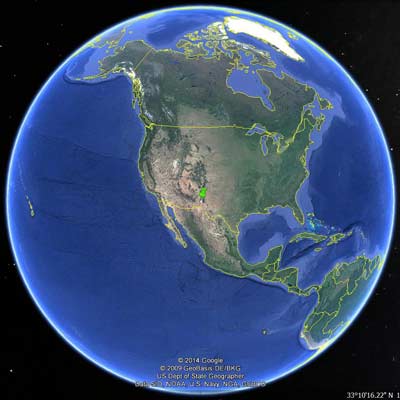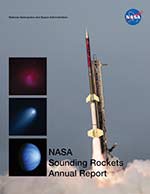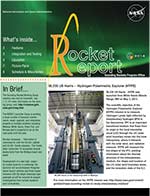
36.352 UG MCCANDLISS/JOHNS HOPKINS UNIVERSITY
Far-uv Off Rowland-circle Telescope for Imaging and Spectroscopy (FORTIS)
- Mission
- Vehicle
- Launch
- Photos
FORTIS is a multi-object spectro/telescope equipped with a next-generation microshutter array (NGMSA) capable of imaging individual stars within NGMSA slitlets while simultaneously obtaining their far-UV spectra. The primary science goal for this mission was to study massive hot star clusters in the star-forming Galaxy M33.
The star-forming spiral disk galaxy Messier 33 (M33) is a near naked-eye object in the Triangulum constellation with an angular extent of~60'x35'. This galaxy, located about 3 million light-years from Earth is the third largest member in the Local Group of galaxies, which includes our own Milky Way along its more massive companion the great (naked-eye) galaxy in Andromeda, also as known as M31. The M33 disk is littered with clusters of massive hot stars that have emerged from collapsing cold natal clouds of gas and dust within the past few million years. These clusters emit copious amounts of light at ultraviolet (UV) wavelengths; light which does not penetrate the Earth's atmosphere and can only be observed from space at altitudes greater than 100 km. They also produce strong stellar winds that have blown apart their natal clouds, herding them into compressed regions of gas and dust surrounding the emerging hot star clusters, while simultaneously spewing fountains of hot enriched material into the circumgalactic medium above the disk.
This mission (36.352 UG) measured the far-UV emission stratification of the hot stellar clusters that litter the disk of M33 by quantifying variations in the gas-to-dust ratio, and searching for suspected sources of unidentified emission hinted at by far-UV photometry from the Hubble Space Telescope. The suspected sources of the emissions include supernovae remnants, H II regions, and photo-dissociation fronts. Each of these regions has a unique spectral signature that are predicted to appear at different distances with respect to the cluster core, reflective of local physical conditions. These measurements will inform our understanding of the contribution of hot star clusters to the circulation of material out of the disk and into the circumgalactic medium, a process which is relevant to understanding spectroscopic measurements of regions surrounding similar type galaxies observed a higher redshift where the spatial resolution is lower.
The Principal Invetigator is Dr. McCandliss/Johns Hopkins University
For more on the FORTIS mission, visit: https://www.nasa.gov/feature/goddard/2019/stars-pollute-but-galaxies-recycle
The Black Brant 9 is a two stage sounding rocket with a Terrier first stage and Black Brant second stage. The Black Brant 9 can reach altitudes of about 600 km. Payloads weighing from 400 to 1200 pounds can be flown.

The FORTIS mission was launched from White Sands Missile Range, NM on October 27, 2019.


